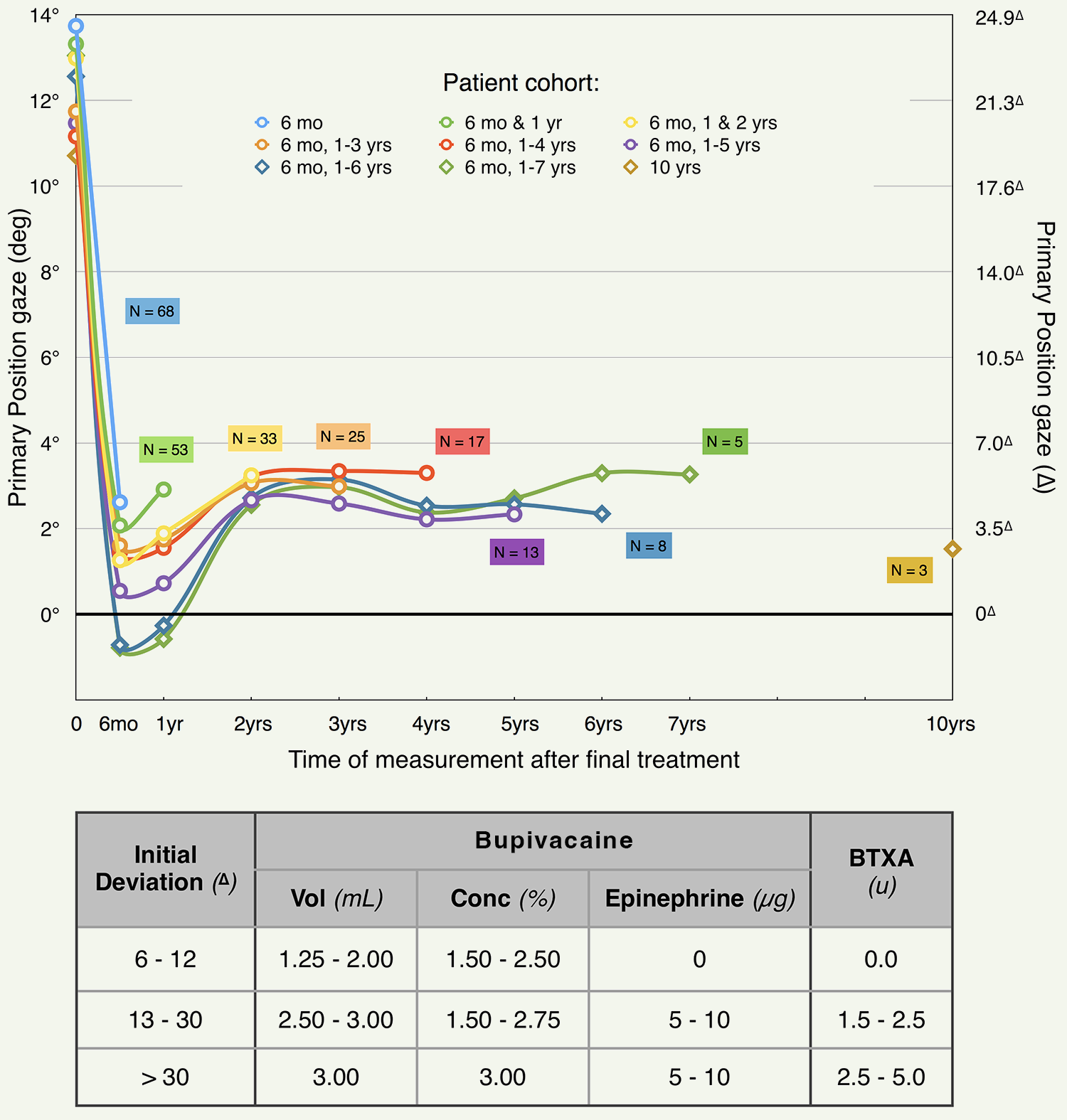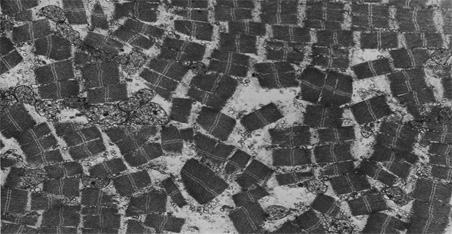|
|
Pharmacologic Injection Treatment of Strabismus |
Pharmacologic Injection Treatment of Comitant Strabismus (2015)
 Purpose: Report the magnitude and stability of corrections in comitant horizontal strabismus achieved by injecting bupivacaine (BPX, optionally with epinephrine) and botulinum A toxin (BTXA) into extraocular muscles of alert adult subjects using EMG guidance.
Purpose: Report the magnitude and stability of corrections in comitant horizontal strabismus achieved by injecting bupivacaine (BPX, optionally with epinephrine) and botulinum A toxin (BTXA) into extraocular muscles of alert adult subjects using EMG guidance.Methods: Fifty-five adult comitant horizontal strabismus patients participated in a prospective observational clinical series, 29 of which previously had 1 or more unsuccessful strabismus surgeries. Thirty-one patients with esodeviations received BPX injections in a lateral rectus muscle, some with BTXA in the medial rectus. Twenty-four patients with exodeviations received BPX in a medial rectus, some with BTXA in the lateral rectus. A second treatment (BPX, BTXA, or both) was given to 27 patients who had residual strabismus after the first. Five patients required additional injections. Clinical alignment was measured at 6 mo, 1 yr, 2 yrs, 3 yrs, 4 yrs, and 5 yrs after treatment, with mean followup of 28 mo. Results: Initial misalignments of 23.8∆ (13.4°) were reduced at 28 mo by 16.0∆ (9.1°) with successful outcomes (residual deviations ≤10∆) in 56% of patients. Sixty-six percent of patients with initial misalignments ≤25∆ enjoyed successful outcomes, with corrections averaging 13.2∆ (7.5°), and 40% of patients with larger misalignments had successful outcomes, with corrections averaging 20.9∆ (11.8°). Corrections were stable over followups as long as 5 yrs. Conclusions: Following transient increases in muscle size, BPX treatment results in stable changes in muscle lengths, without recession, resection, or other compensatory damage to extraocular biomechanics. Injection treatments effect stable, clinically significant corrections in comitant horizontal strabismus, providing low-cost alternatives to incisional strabismus surgery, particularly where it is desirable to minimize surgical anesthesia and avoid extraocular scarring.
|
| Bupivacaine Injection Remodels Extraocular Muscles & Corrects Comitant Strabismus (2013) Purpose: Evaluate clinical effectiveness and anatomic changes resulting from bupivacaine injection into extraocular muscles to treat non-paralytic horizontal strabismus. Methods: We report a prospective observational clinical series of 31 comitant horizontal strabismus patients. Nineteen with esotropia received bupivacaine injections in the lateral rectus, and 12 with exotropia, in the medial rectus. Sixteen of these, with large strabismus angles, also received botulinum type A toxin injections in the antagonist muscle at the same treatment session. A second treatment was given to 13 patients who had residual strabismus after the first. Clinical alignment measures and MRI-derived muscle volume, maximum crossectional area, and shape, with followups from 6 mo to 3 yrs. Results: At average 15.3 mo after the final treatment, original misalignment was reduced by 10.5∆ (6.0°) with residual deviations 10∆ in 53% of patients. A single treatment with bupivacaine alone reduced misalignment at 11.3 mo by 4.7∆ (2.7°) with residual deviations 10∆ in 50% of patients. Alignment corrections were remarkably stable over followups as long as 3 yrs. Six months after bupivacaine injection, muscle volume had increased by 6.6%, and maximum crossectional area by 8.5%, gradually relaxing towards pre-treatment values thereafter. Biomechanical modeling with Orbit™1.8 suggests that changes in agonist and antagonist muscle lengths were responsible for the enduring changes in eye alignment. Conclusions: Bupivacaine injection alone or together with botulium toxin injection in the antagonist improves eye alignment in comitant horizontal strabismus by inducing changes in rectus muscle structure and length.
|
Early Studies of Bupivacaine injection Treatment of Strabismus (2009) Existing strabismus treatments rely on compensatory impairment of EOMs. Bupivacaine is a selective myotoxin with effects similar to mechanical overloading: myofiber destruction followed by rapid regeneration. We intend to harness its potential to increase contractile & elastic muscle forces as unique treatments for strabismus and other muscle disorders: Existing strabismus treatments rely on compensatory impairment of EOMs. Bupivacaine is a selective myotoxin with effects similar to mechanical overloading: myofiber destruction followed by rapid regeneration. We intend to harness its potential to increase contractile & elastic muscle forces as unique treatments for strabismus and other muscle disorders:
|


